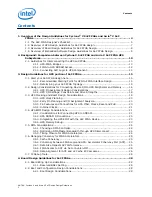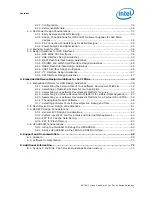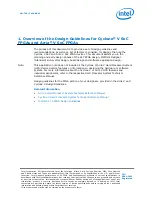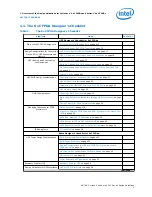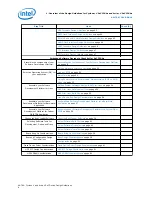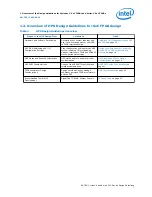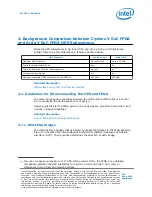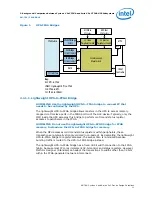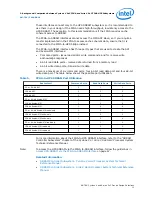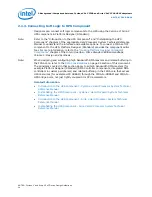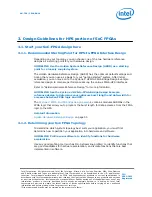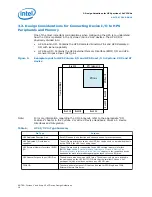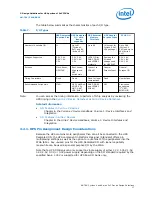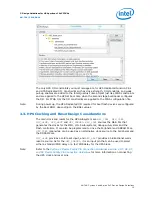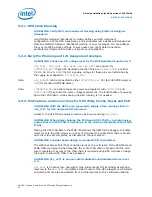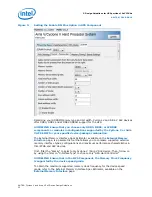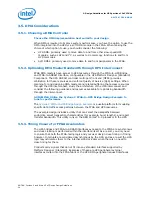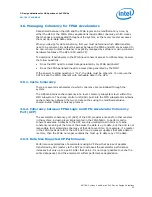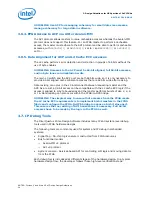
2.1.1.2. HPS-to-FPGA Bridge
GUIDELINE: Use the HPS-to-FPGA bridge to connect memory hosted by the
FPGA to the HPS.
The HPS-to-FPGA bridge allows masters in the HPS such as the microprocessor unit
(MPU), DMA, or peripherals with integrated masters to access memory hosted by the
FPGA portion of the SoC device. This bridge supports 32, 64, and 128-bit datapaths,
allowing the width to be tuned to the largest slave data width in the FPGA fabric
connected to the bridge. This bridge is intended to be used by masters performing
bursting transfers and should not be used for accessing peripheral registers in the
FPGA fabric. Control and status register accesses should be sent to the lightweight
HPS-to-FPGA bridge instead.
GUIDELINE: If memory connected to the HPS-to-FPGA bridge is used for HPS
boot, ensure that its slave address is set to 0x0 in Platform Designer
(Standard).
When the HPS BSEL pins are set to boot from FPGA (BSEL = 1) the processor
executes code hosted by the FPGA residing at offset 0x0 from the HPS-to-FPGA
bridge. This is the only bridge that can be used for hosting code at boot time.
2.1.1.3. FPGA-to-HPS Bridge
GUIDELINE: Use the FPGA-to-HPS bridge for cacheable accesses to the HPS
from masters in the FPGA.
The FPGA-to-HPS bridge allows masters implemented in the FPGA fabric to access
memory and peripherals inside the HPS. This bridge supports 32, 64, and 128-bit
datapaths so that you can adjust it to be as wide as the widest master implemented in
the FPGA.
GUIDELINE: Use the FPGA-to-HPS bridge to access cache-coherent memory,
peripherals, or on-chip RAM in the HPS from masters in the FPGA.
Although this bridge has direct connectivity to the SDRAM subsystem, the main intent
of the bridge is to provide access to peripherals and on-chip memory, as well as
provide cache coherency with connectivity to the MPU accelerator coherency port
(ACP).
To access the HPS SDRAM directly without coherency you should connect masters in
the FPGA to the FPGA-to-SDRAM ports instead, because they provide much more
bandwidth and lower-latency access.
2.1.2. FPGA-to-HPS SDRAM Access
In addition to the FPGA-to-HPS bridge, FPGA logic can also use the FPGA-to-SDRAM
interface to access the HPS SDRAM.
GUIDELINE: Use the FPGA-to-SDRAM ports for non-cacheable access to the
HPS SDRAM from masters in the FPGA.
The FPGA-to-SDRAM ports allow masters implemented in the FPGA fabric to directly
access HPS SDRAM without the transactions flowing through the L3 interconnect.
2. Background: Comparison between Cyclone V SoC FPGA and Arria V SoC FPGA HPS Subsystems
AN-796 | 2018.06.18
AN 796: Cyclone V and Arria V SoC Device Design Guidelines
12


